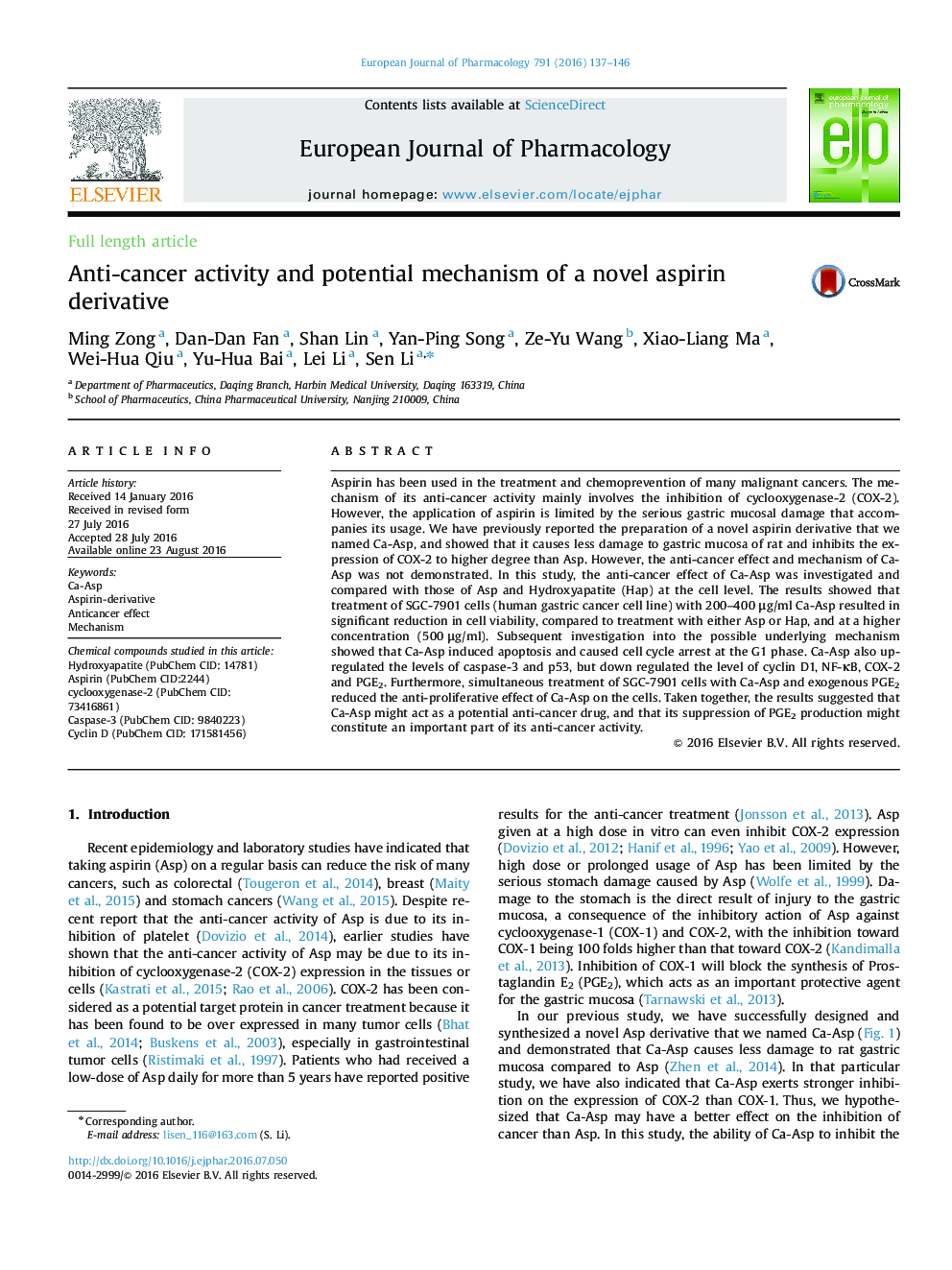| Article ID | Journal | Published Year | Pages | File Type |
|---|---|---|---|---|
| 2530785 | European Journal of Pharmacology | 2016 | 10 Pages |
Aspirin has been used in the treatment and chemoprevention of many malignant cancers. The mechanism of its anti-cancer activity mainly involves the inhibition of cyclooxygenase-2 (COX-2). However, the application of aspirin is limited by the serious gastric mucosal damage that accompanies its usage. We have previously reported the preparation of a novel aspirin derivative that we named Ca-Asp, and showed that it causes less damage to gastric mucosa of rat and inhibits the expression of COX-2 to higher degree than Asp. However, the anti-cancer effect and mechanism of Ca-Asp was not demonstrated. In this study, the anti-cancer effect of Ca-Asp was investigated and compared with those of Asp and Hydroxyapatite (Hap) at the cell level. The results showed that treatment of SGC-7901 cells (human gastric cancer cell line) with 200–400 μg/ml Ca-Asp resulted in significant reduction in cell viability, compared to treatment with either Asp or Hap, and at a higher concentration (500 μg/ml). Subsequent investigation into the possible underlying mechanism showed that Ca-Asp induced apoptosis and caused cell cycle arrest at the G1 phase. Ca-Asp also up-regulated the levels of caspase-3 and p53, but down regulated the level of cyclin D1, NF-κB, COX-2 and PGE2. Furthermore, simultaneous treatment of SGC-7901 cells with Ca-Asp and exogenous PGE2 reduced the anti-proliferative effect of Ca-Asp on the cells. Taken together, the results suggested that Ca-Asp might act as a potential anti-cancer drug, and that its suppression of PGE2 production might constitute an important part of its anti-cancer activity.
